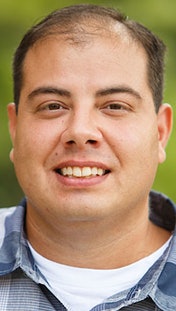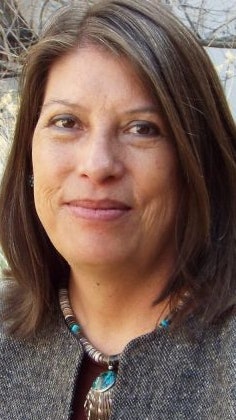 Dr. Brady DeSanti
Dr. Brady DeSanti
According to the CDC’s National Center for Health Statistics, as of 2021, Native Americans’ life expectancy of 65.2 years was equal to the life expectancy of the total U.S. population in 1944. The CDC also reported in September that the AIAN population was at higher risk during the pandemic for COVID-19 infection, hospitalization, and death than other racial and ethnic groups.
Those revelations were consistent with the impact that professors Dr. Tiffany S. Lee (Diné /Lakota) and Dr. Brady DeSanti (Lac Courte Oreilles Ojibwe) say they witnessed among their students and communities during the pandemic. Lee is a professor and chair of Native American Studies at the University of New Mexico (UNM). DeSanti is director of Native American studies and associate professor of religious studies at the University of Nebraska Omaha (UNO). They shared their experiences with Diverse about how their institutions continue to rebound from the setbacks of COVID-19 and the disproportionate effects of COVID-19 on the Native American population throughout the U.S.
“It was devastating, extremely devastating,” Lee recalls. “There was a lot of loss, a lot of loss — a huge impact. It goes back to settler colonialism. There is a whole history of disparity there, health disparities even prior to the pandemic. So, (the pandemic) really heightened that.”
Lee explains how some of her students live in rural areas “not having access to hospitals nearby … not even just having running water. There are lots of families on the reservations that still do not have running water in their homes. They have to haul water.” Home computers and internet service were nonexistent for many students in the department. “When a pandemic hits, it exposes those vulnerabilities,” she continues. Lee says one of the department’s solutions for adapting to the pandemic was to provide technology scholarships that enable students to purchase tech items with which to do their research and assignments at home.
Optimism amid loss
Despite the considerable obstacles, Lee says her department not only has survived the difficult times, but it is thriving. A master’s program was launched in 2018, and in spring 2022, the state legislature approved a Ph.D. program. UNM expects to have the fourth Native American or Indigenous studies department in the nation with a Ph.D. program. Its first cohort of students is slated to arrive in fall 2023, and the department is in the process of hiring a sixth tenure-track faculty member.
There have been cutbacks throughout the university. At UNO, the Native American Studies program — which offers a minor in Native American Studies for students who are majoring in other disciplines — currently “has an operating budget of about $2,000,” explains DeSanti.
DeSanti says he saw the devastating effects of the pandemic and the impact on students in the UNO program and their families. He says obtaining grants and donors to fund recruiting, lectures, and events has become paramount in helping the program recover from the negative impact of the pandemic.
 Dr. Tiffany S. Lee
Dr. Tiffany S. Lee
Both professors say that communal gatherings and cultural events hold significance in their programs as they do within the communities they serve.
Despite the COVID-related setbacks, DeSanti is cautiously hopeful, given some recent successes such as a new residence hall for Native American students opening next spring and what he describes as “a good working relationship” with administration. He says colleagues in other departments have been helpful in writing grant proposals and helping to develop student recruitment strategies. DeSanti is also hoping to hire additional fulltime faculty following several departures and retirements. Specifically, he says, “There needs to be more fulltime Native American faculty representation,” noting that most Native faculty are adjuncts.
DeSanti says he remains positive “because of the resiliency of the students, faculty and community and so much support from my executive council.”
Lee says her department was fortunate in that it was multi-modality prior to the pandemic. “When we had to move to fully remote we were already set up, so the transition was fairly smooth for us,” she says, referring to faculty and staff. “But for students it was more difficult.”
UNM and its Native American Studies department are recovering from the impact of the COVID-19 pandemic, but the cultural losses and the human toll from the pandemic are deeper, according to Lee. “We are coming out of it, in the sense that we’re coming back in-person and getting back in school,” Lee says. “But a lot of our elders were lost, elders who have knowledge of our medicines, our prayers, our songs, knowledge that was so precious.”















